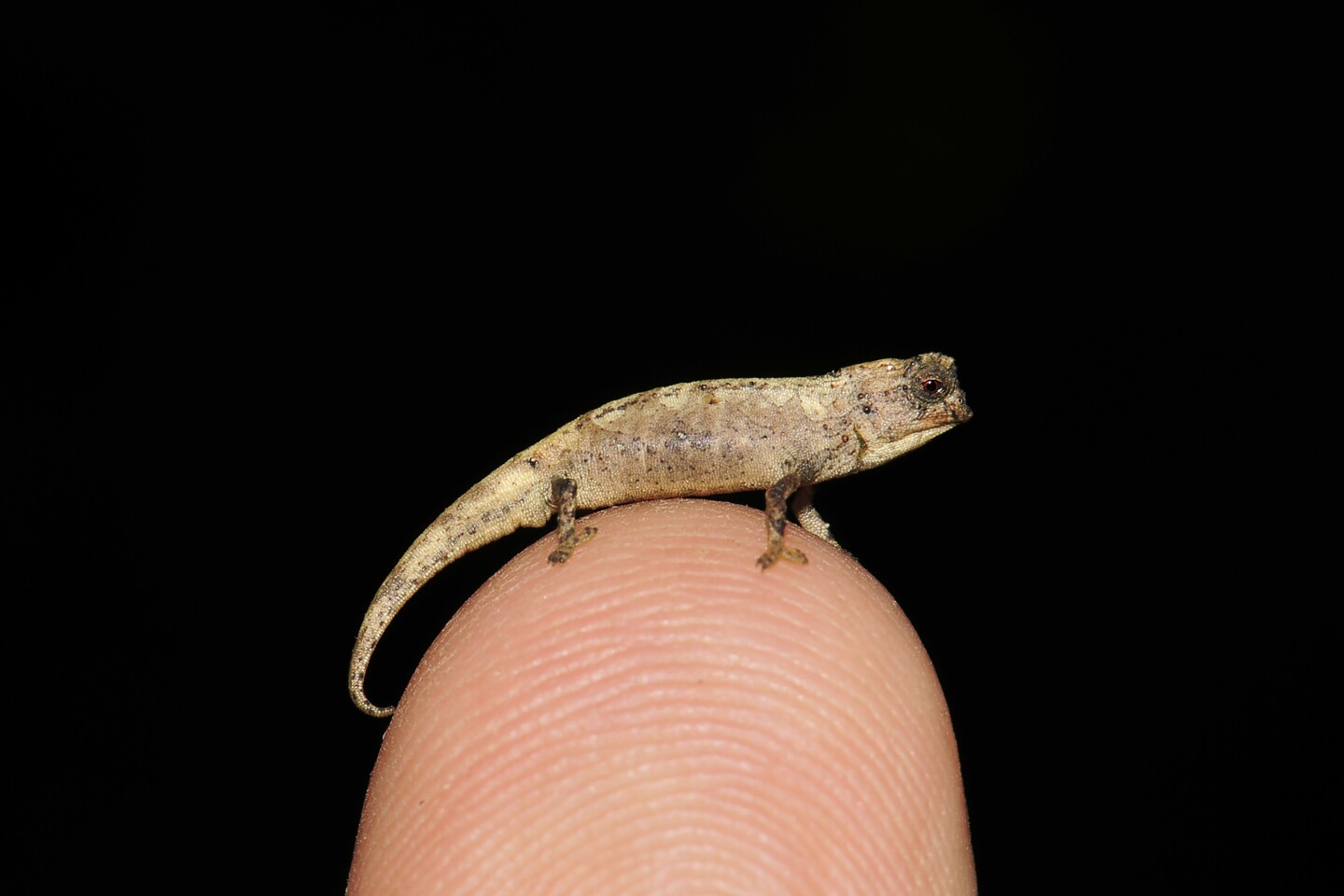Descubren al reptil más pequeño del mundo en Madagascar
El animal cabe en la punta de un dedo y tiene características similares a los camaleones

This undated handout photo released on February 5, 2021, by the Bavarian State Collection of Zoology (Zoologische Staatssammlung Munchen) shows the chameleon “Brookesia nana”, identified as Earth’s smallest known reptile, in Madagascar. - Scientists have identified Earth’s smallest known reptile in Madagascar, warning at the same time that sustained destruction of forests the north of the island threatens its survival. Tiny enough to perch comfortably on a fingertip, the ultra-compact chameleon -- dubbed Brookesia nana -- has the same proportions and world-weary expression as its larger cousins around the world. A joint expedition in 2012 of German and Malagasy scientists did not know whether the two specimens they collected -- one female and one male -- were adults until much later, Frank Glaw, curator of herpetology at the Bavarian State Collection of Zoology, told AFP. The male’s body -- about the size of a peanut -- was 13.5 millimetres long, with the tail adding another nine millimetres. The female measured 29 mm from its nose to the tip of its tail. (Photo by Frank GLAW / Zoologische Staatssammlung Munchen / AFP) / RESTRICTED TO EDITORIAL USE - MANDATORY CREDIT “AFP PHOTO / BAVARIAN STATE COLLECTION OF ZOOLOGY (ZOOLOGISCHE STAATSSAMMLUNG MUNCHEN) / FRANK GLAW - NO MARKETING NO ADVERTISING CAMPAIGNS - DISTRIBUTED AS A SERVICE TO CLIENTS
/FRANK GLAW/AFP
Científicos descubrieron en Madagascar el reptil más pequeño del mundo, de acuerdo a un estudio publicado recientemente, cuyo cuerpo tiene las mismas características que los camaleones, pero cabe en la punta de un dedo.
“Lo descubrimos en las montañas del norte de Madagascar”, dijo Frank Glaw, responsable de herpetología de la Colección estatal Zoológica de Múnich.
Un equipo de científicos alemanes
y
malgaches encontró dos especímenes, durante una expedición en 2012, pero no se sabía que se trataba de individuos adultos, precisó.
El macho “Brookesia nana” es el reptil adulto más pequeño del mundo, y mide apenas 13.5 milímetros desde la boca a la base de la cola, el tamaño de un maní,
y
22.5 milímetros contando la cola.
El hemipene (órgano sexual)
del
Brookesia nana es muy grande en proporción a su tamaño. Mide 2.5 milímetros, es decir 18.5% de la longitud
del
animal.
La hembra, por su parte, es mucho
más
grande que el macho, con 19.2 milímetros de la boca a la base de la cola,
y
28.9 milímetros contando la cola, detalla Frank Glaw en la revista Scientific Reports.
Estos dos especímenes siguen siendo los únicos descubiertos para esta especie.
Pero estos microcamaleones descubiertos no son producto
del
“enanismo insular”, el fenómeno según el cual especies en una isla, similares a su ancestro continental, evolucionan con el tiempo reduciendo su tamaño, bajo la presión de varios factores.
El animal
vive
en una región montañosa, a mil 300 metros de altitud.
Apenas descubierto, la Brookesia nana ya es considerado como una especie amenazada, añade el científico.
“La destrucción
del
hábitat representa la mayor amenaza para los anfibios
y
reptiles de Madagascar”, advierte.
Madagascar es uno de los países
más
pobres
del
mundo
y
su flora
y
fauna no están suficientemente protegidas.
ES DE INTERÉS|




